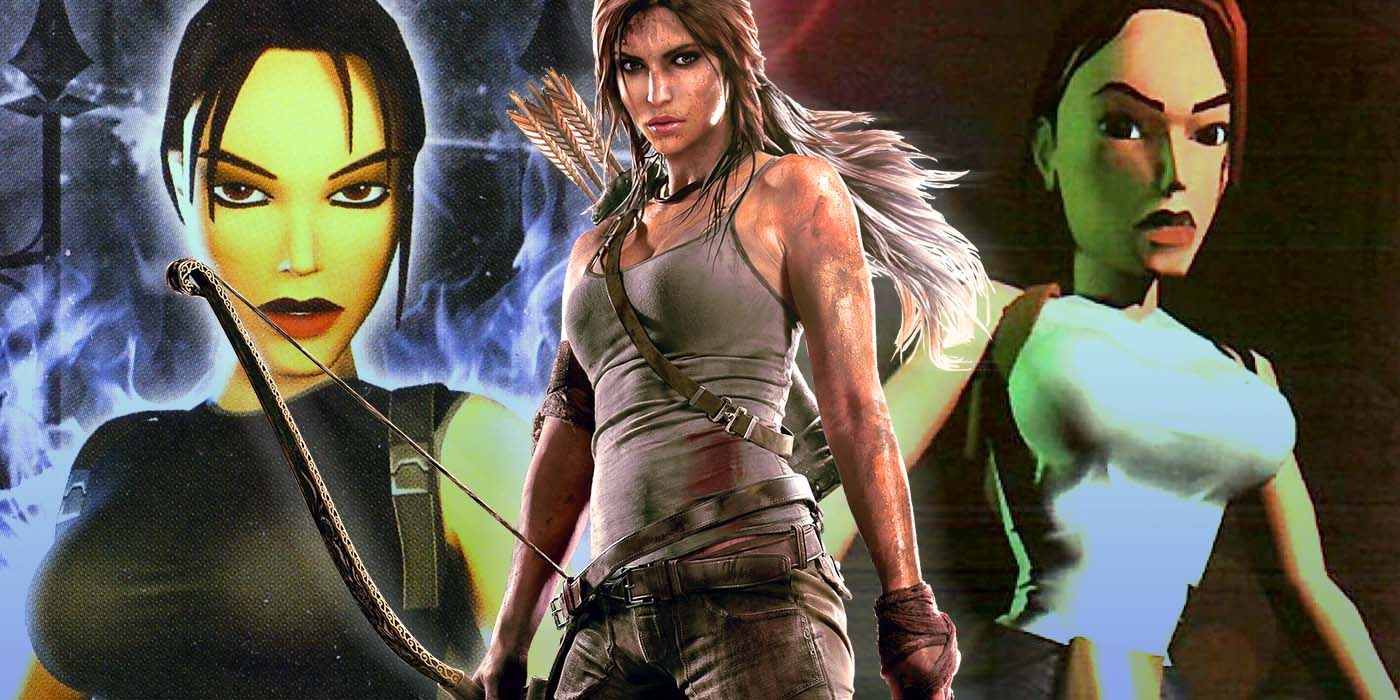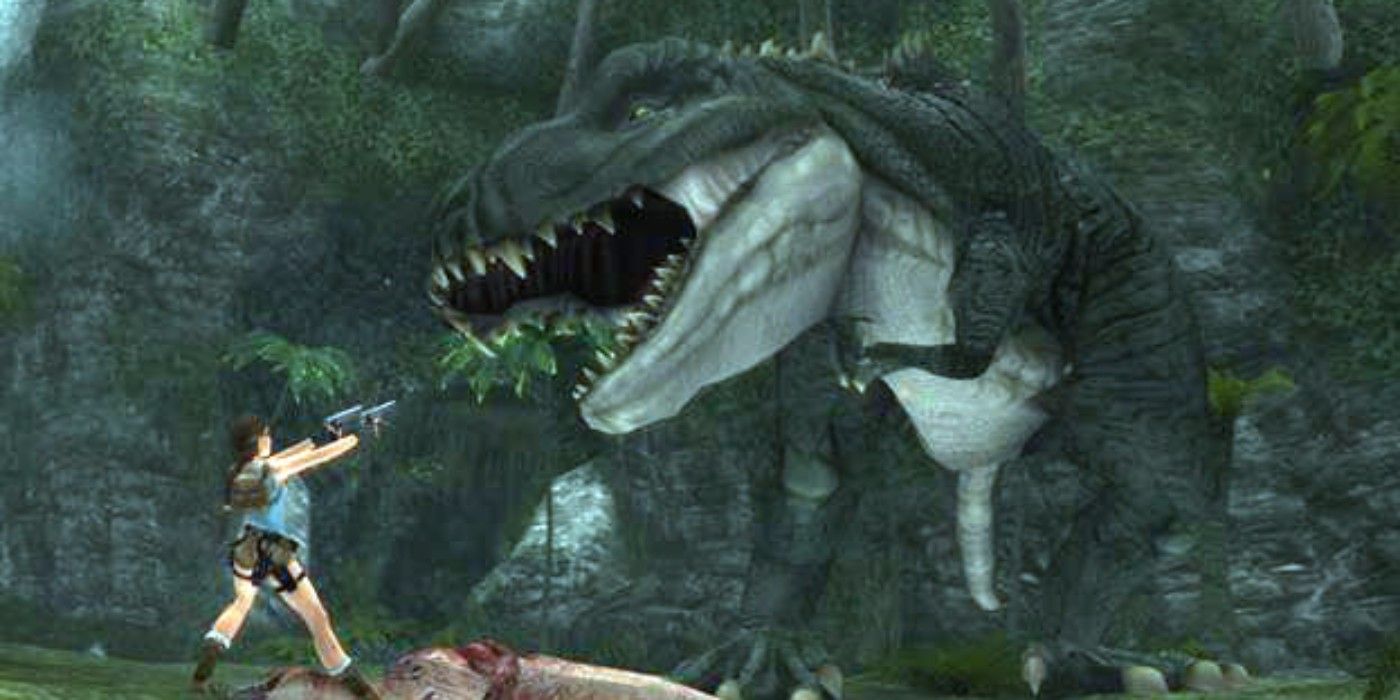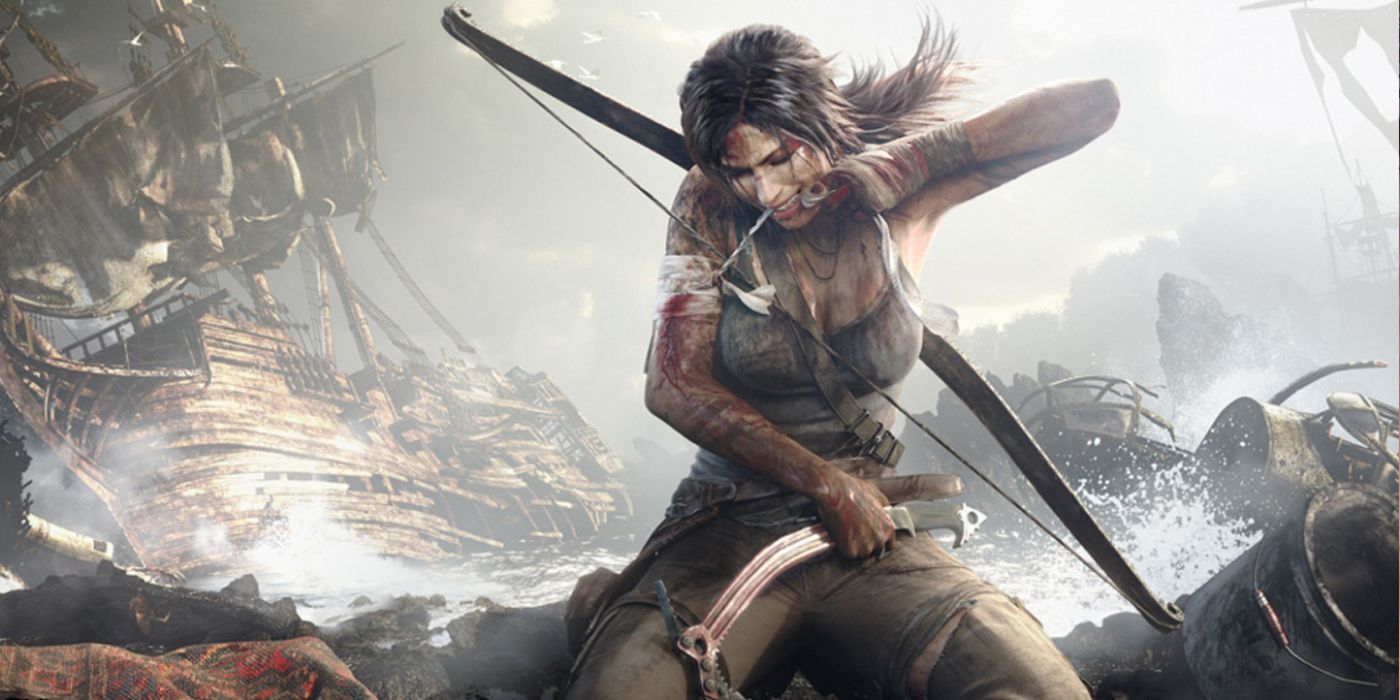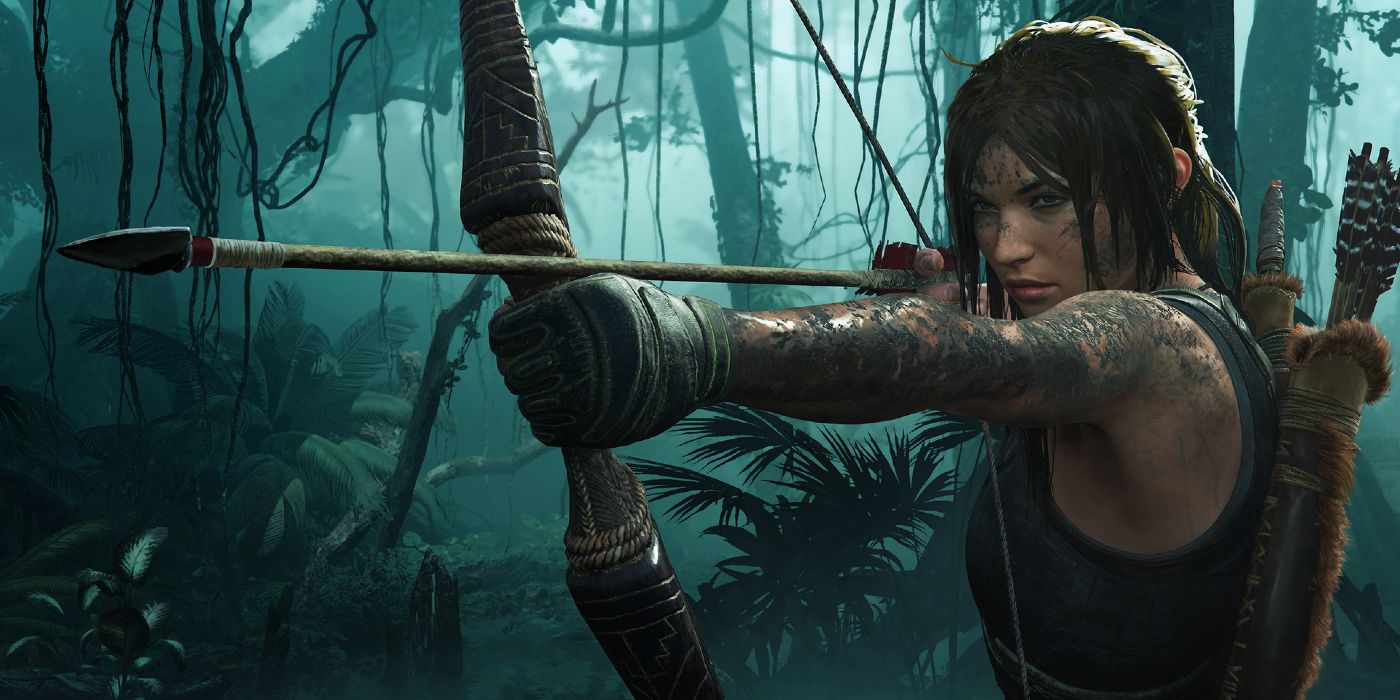Tomb Raider's Lara Croft has seen quite the evolution in her 22-year legacy. The game's fusion of sex appeal and action-adventure successfully captured a more mature audience. However, the climate has changed since Croft's 1996 debut and the increase of women gamers spurred a new look for the iconic character.
As it marked a significant shift in Lara Croft's aesthetic, Tomb Raider (2013) was met with critical acclaim. Fans embraced the changes, proving the series' enduring success goes beyond Croft's assets. Here's a breakdown of the archaeologist's transformation from video game vixen to feminist hero.
The Early Years
Before strong female protagonists like Ellie from The Last of Us and Aloy from Horizon Zero Dawn, there was Lara Croft. In 1996, Tomb Raider premiered on the scene to show off the PlayStation and Sega consoles' power. Inspired by the Egyptian pyramids, the 3D grid-based level design was innovative for its time. Players stepped into the role of Croft, an archaeologist-adventurer hired to obtain an artifact. Gameplay involves shooting enemies and solving puzzles.
The recipe equaled success. Tomb Raider became one of the best-selling video games in PlayStation history. What was more surprising to creators was that women wanted to play the game, too.
However, Tomb Raider was made by men for men, which created an interesting dilemma. On the one hand, Lara Croft was a feminist icon. She was one of the few female characters that were the star of the show -- although the competition wasn't steep, considering her main rival was Ms. Pac-Man. On the other hand, Croft was oversexualized. She ventures into thick jungles and dangerous tombs wearing nothing more than a tank top and tight shorts.
Croft's iconic attire was a strategic choice. The developers knew a sexy outfit would entice men to step into the shoes of a female protagonist. It's a trope that's remained in video games since. Women characters are often outfitted in high heels and revealing clothing instead of armor like their male counterparts.
Sex appeal became a huge selling point for the series. Lara Croft became one of the few fictional characters to be featured in Playboy magazine. In 1997, Tomb Raider II ended the game with Croft teasing players with a shower. Just before stepping in the water, she turns and says, "Don't you think you've seen enough?" Although the scene evokes humor by breaking the fourth wall, it highlights what devs thought most fans wanted to see -- Lara Croft nude.
The Shift
In 2013, Square Enix reimagined the archeologist in the game Tomb Raider. Croft was aged down. Her body type was changed to be more realistic and she swapped her trademark short shorts for cargo pants. The bones of the original character remain, but this version has more depth. Croft is still confident, but she is relatively new to the whole adventuring thing, which adds an element of vulnerability.
The cosmetic changes were shocking to some players, but for the first time, Lara Croft more accurately portrayed women. In the reboot, a kidnapping sequence shows a man touching Croft's cheek against her wishes while implying something worse is yet to come. Although Croft escapes, the uncomfortable scene is a reminder of gendered violence. Despite the series having a female protagonist for 17 years, this is one of the few times the game depicts a "woman's story."
The transformation was also captured in the films. Alicia Vikander plays a very different version of Croft than Angelina Jolie.
The Legacy
Lara Croft's 2013 makeover proved devs could keep up with the current climate, where women gamers want women characters to tell their unique stories. The narrative is changing everywhere. Shooters like Apex Legends have taken pride in dressing women characters realistically, meaning they wear non-revealing armor like their male counterparts. Other games, like The Elder Scrolls V: Skyrim, offer various armors to choose from, giving everyone choices.
Tomb Raider's complicated history is both criticized and celebrated. The series introduced a memorable character that has earned a place on the Walk of Game. By focusing on adventure rather than Croft's Barbie doll figure, Tomb Raider has seen a massive revival since Tomb Raider: Angel of Darkness's disappointing reception.
Thanks to an increase in women gamers, the Lara Croft players know today is vastly different from the 1996 adventurer. Based on sales alone, that isn't a bad thing.




